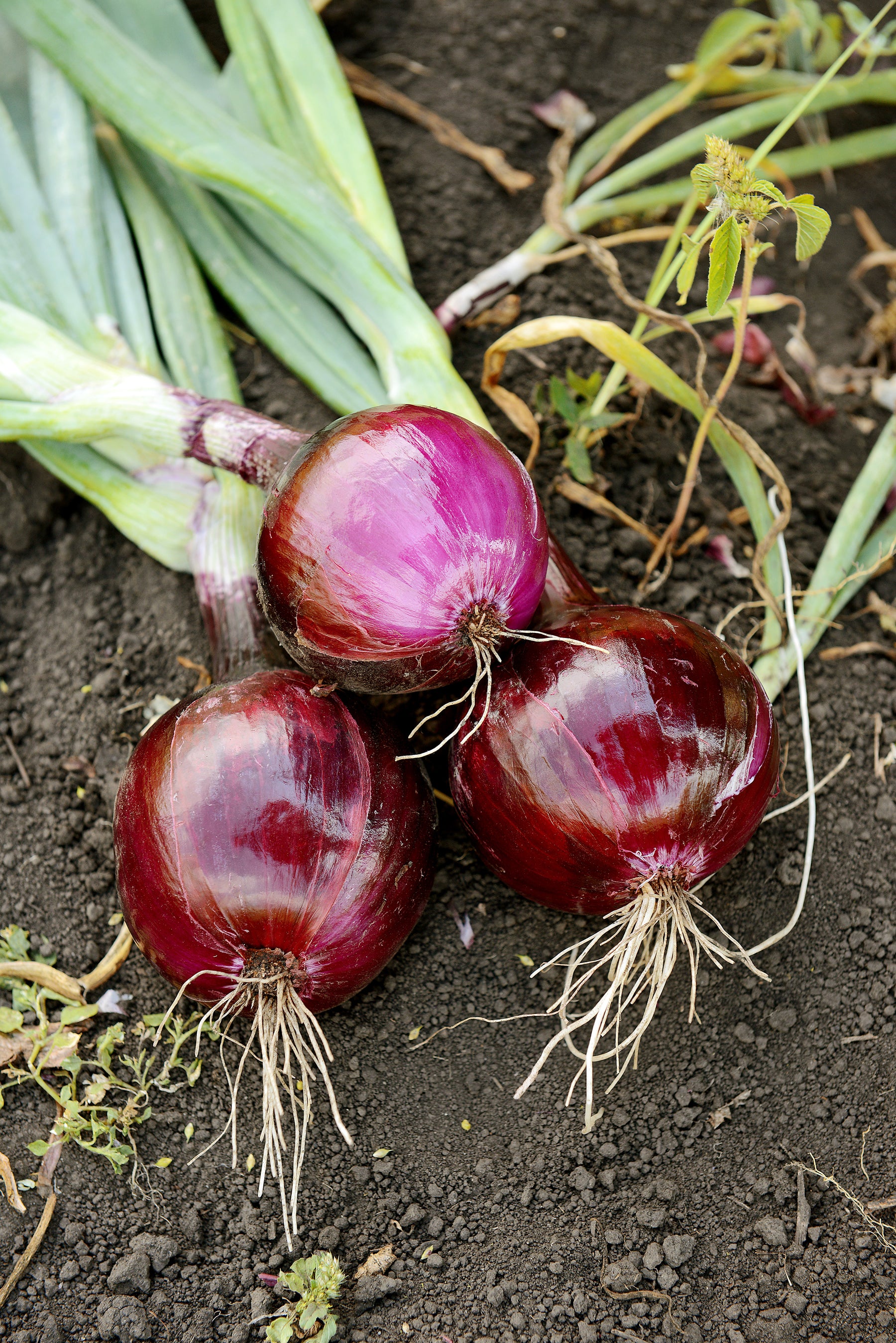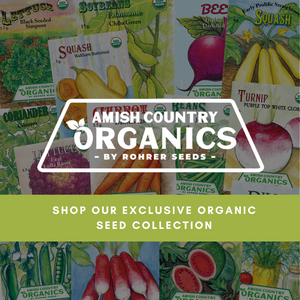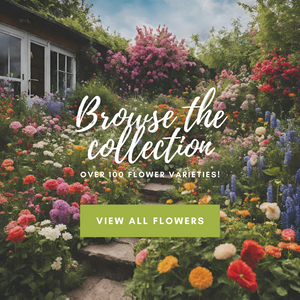
Growing Onions from Seed, Set, or Plant
Early spring means it is time to plant onions – those delicious vegetables that add flavor and zing to almost any dish! This biennial bulb loves lots of sunshine, slightly acidic soil, and cool temperatures. They also store well in cool, dry places, for fresh flavors throughout the year. Onions grow their top leaves in cooler weather and develop bulbs as weather warms, taking about three and a half months to reach maturity.
Onions can be planted from seeds, seedlings that have been started indoors, or bulb sets. Many folks start onion seeds indoors (January through early February) about 8 weeks before transplanting them outdoors. Peat pots or egg cartons with well drained, fertile soil are a great way to start seeds. A sunny windowsill and thorough watering give onion plants a great start, germinating anywhere from 4-10 days and ready to plant outdoors in about eight weeks, when daytime temperatures are around 50 degrees.
Growing onions from sets (or bulbs) is the most popular way to grow onions. Bulbs (that look like miniature onions) are planted about an inch deep into the ground, with loose soil and compost for good drainage, and a nitrogen-based fertilizer. Make sure the planting area is in full sunshine and free from weeds. Onion bulbs should be spaced four to five inches apart; rows should be about a foot apart.
- Tried and true tips for growing onions include:
- Full sun (at least 6 hours per day, but more is better)
- Well-drained soil that includes decomposed organic material
- Slightly acidic to neutral pH (sparing use of nitrogen-based fertilizer, stopping as the bulbs mature)
- Regular watering at the roots – about an inch a week
- Cool to moderate temperatures
- Keep the area around the onions free of weeds
Long Day vs. Short Day Onions
How much regional daylight available to onion plants helps to determine which variety grows best in your area. Onions are classified by Long Day, Short Day, or Neutral (or Intermediate) Day.
Lancaster County is geographically in the Long Day area where sweet onions mature a few weeks before the rest and onion plants receive 14-16 hours of sunlight each day. Our local climate also supports many varieties of Neutral Day onions, depending on the hours exposed to daylight. Rohrer Seeds stocks the best onion seeds and sets for our area, but if you are ordering online, be sure to know the sunshine requirements of the onions you plan to grow. Long day onions (like Walla Walla, Yellow, Sweet Spanish, Redwing, and Ring Master) need between 14 and 16 hours of sunshine each day, while Neutral Day onions (Early Yellow Globe, Superstar, Cabernet) fall right in the middle, needing 12-14 hours of daylight for best growth. Short day onions (for example: Southern Belle, Cipollini, Red Creole, and White Bermuda onions) will begin forming those delicious bulbs of flavor when the plants are exposed to 10-12 hours of daylight each day.
Harvesting and Storing Onions
Onions can be harvested at any stage of maturity. If you are thinning seedlings, you can use these immature bulbs as ‘green onions”. Onions are mature when about half the top leaves are droopy and collapsed and the skin on the bulb feels papery. Then gently flatten the remaining leaves around the onion bulb without breaking them off and allow the whole onion to sit in the ground for a few more days. To remove onions from the ground, it is best to gently dig around the bulbs and roots to loosen them, before lifting them from the dirt and brushing them off. When the onion skins are dry and papery and the neck starts to shrivel, the onions can be stored in a cool, dry location, ready for use.
Salads, soups, sandwiches, fried, sauteed, “blooming,” rings; raw or cooked . . . onions add fabulous flavor and healthy antioxidants to any dish. And with over 600 kinds of onions ranging from zesty to sweet, experiment a little to see which one tickles your tastebuds!




Comments
Leave a comment